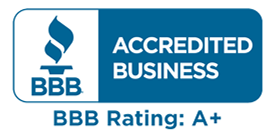Solar Power Incentives in California
With all the sunshine in California, it’s a prime location for solar power. Join the countless customers who have made the leap and benefited from the state’s generous incentives. Capital City Solar helps customers take advantage of solar credits and make the most of renewable energy. Learn more about your eligibility and enhance your property with the latest green technology.
How Do Tax Incentives Work?
For most homeowners, the biggest motivator for switching to solar power is the rising energy rates charged by utility companies. This is especially true for anyone under time-of-use rates. Our customers see energy bills drop by at least 75% on average after installing a solar power system. In addition to this, there are other financial incentives for going solar.

This is how they work:
Federal Investment Tax Credit
One of the best incentives currently being offered is the Investment Tax Credit (ITC), which offers substantial tax credits to people who purchase solar power systems for their homes or businesses. This solar credit is designed to cut the up-front cost of investing in solar by giving you a partial refund on your solar power system. It allows you to pair an energy storage system with a solar battery and claim up to 30 percent of the cost of your solar battery as a credit toward your federal taxes. For most homeowners, the ITC can help decrease the cost of a battery by an additional $3,000 to $4,000. Since 2023, standalone storage has also been eligible for this credit, thanks to the Inflation Reduction Act.
Deductions vs. Tax Credits
However, it’s important to note that this is not a deduction because that would simply reduce your taxable income. Instead, tax credits directly reduce the amount of money you owe to the government. To help show the difference, imagine that you make $60,000 in taxable income this year and owe $3,000 in taxes. A tax deduction of $3,000 would reduce your taxable income to $57,000, meaning that the taxes you owe on it would be reduced slightly, maybe by a couple hundred dollars. On the other hand, a tax credit of $3,000 would be subtracted from the $3,000 tax bill, reducing it to $0. That’s a big difference.

Solar Credits Save You Money
Solar panels are an especially wise investment when you take advantage of the relevant incentives available. Save thousands on long-term renewable energy, the upfront costs of installing a solar system, and taxes owed. Get in contact with us to learn more about your money-saving options when it comes to solar energy, and request a free quote.
Learn How to Finance Your Solar Today!

